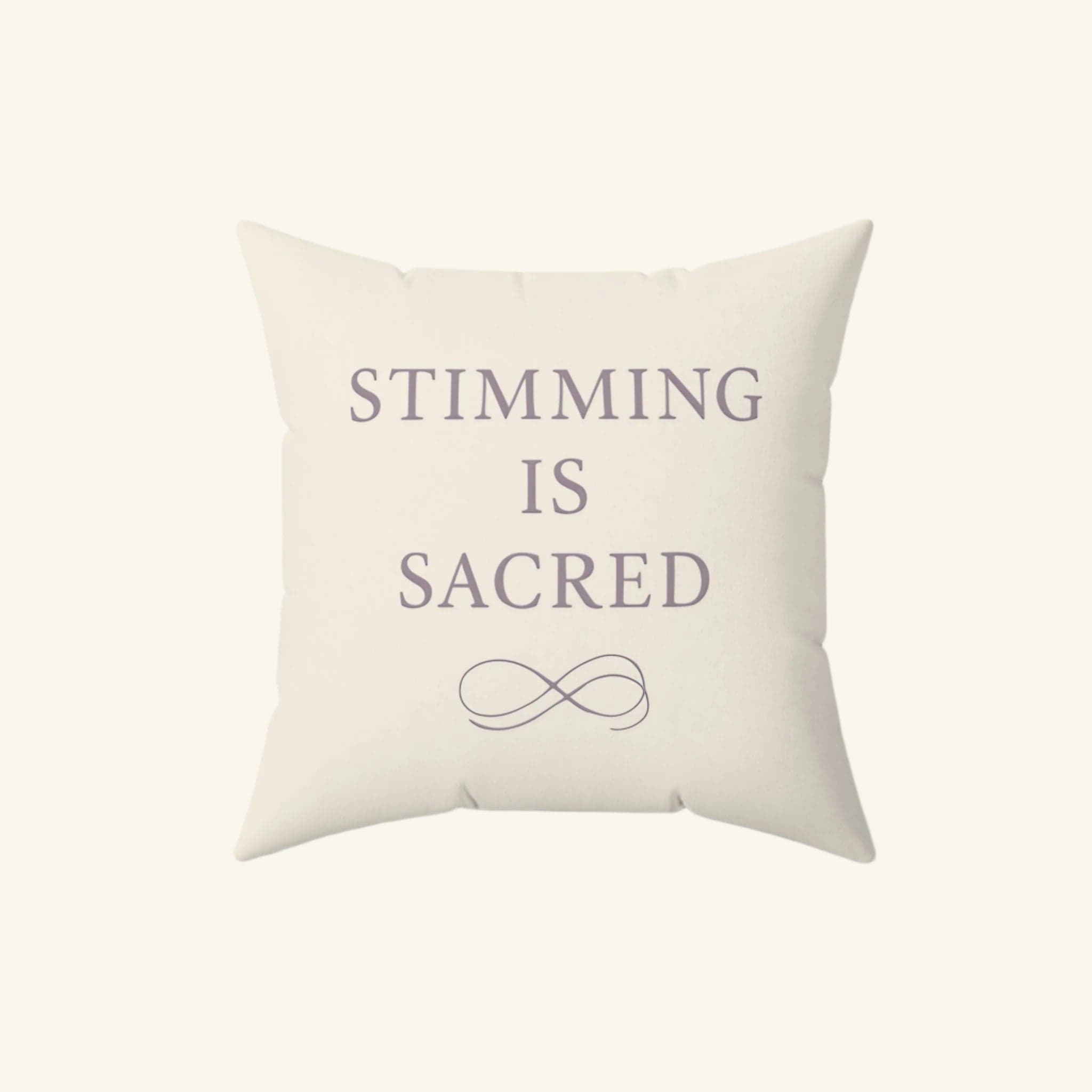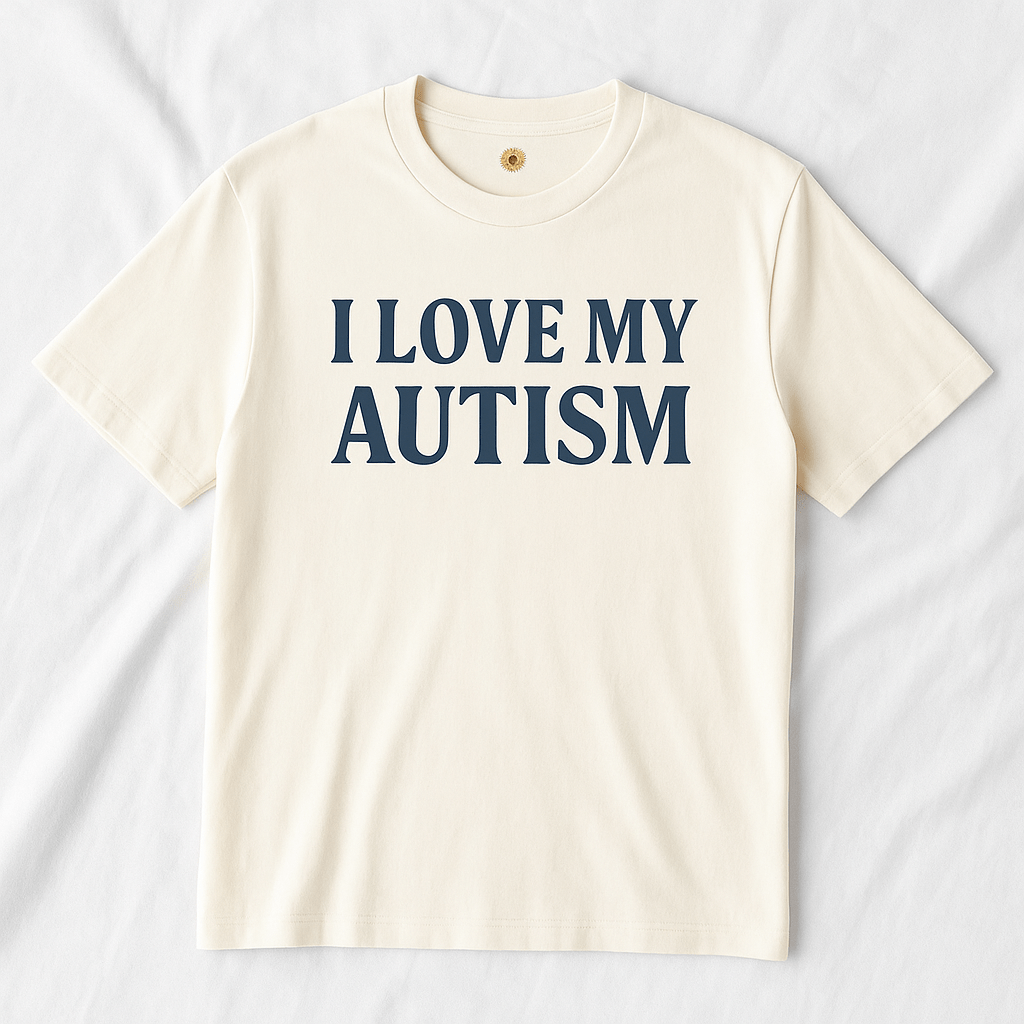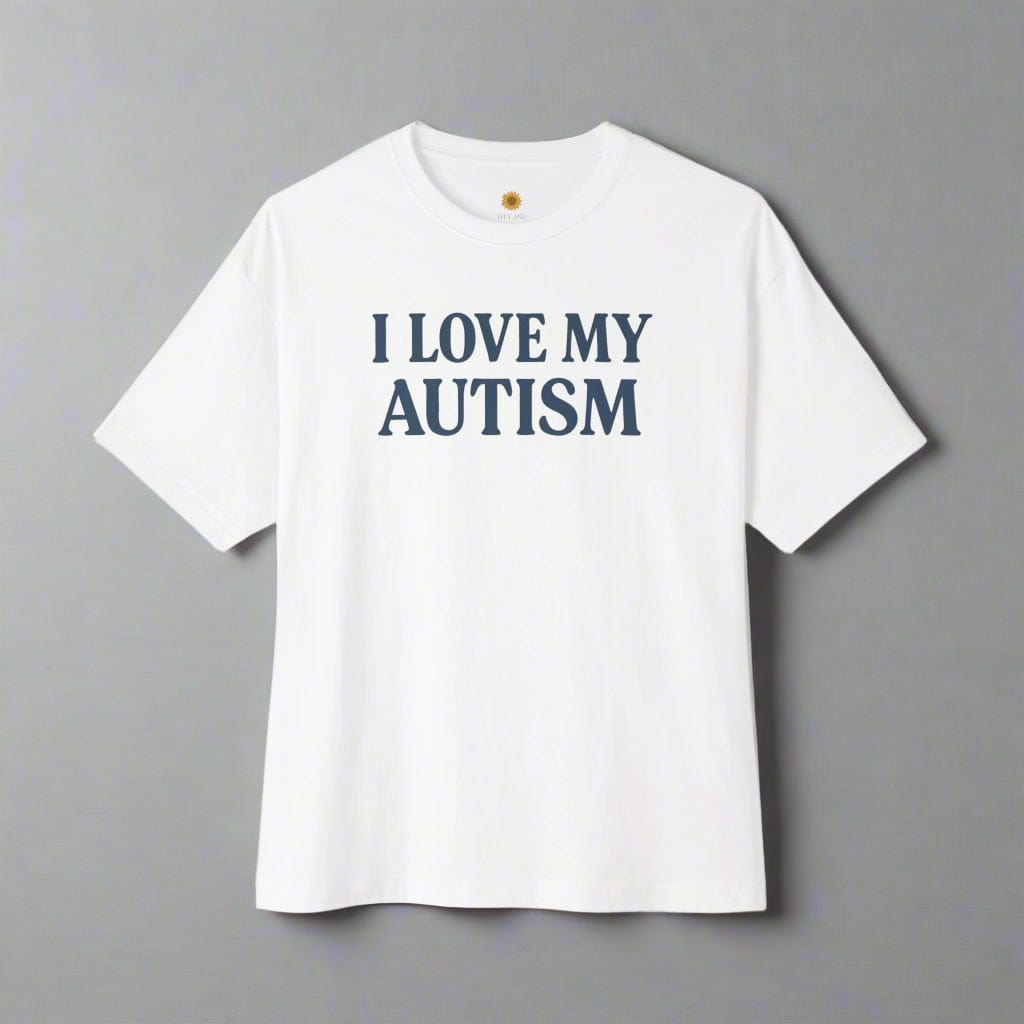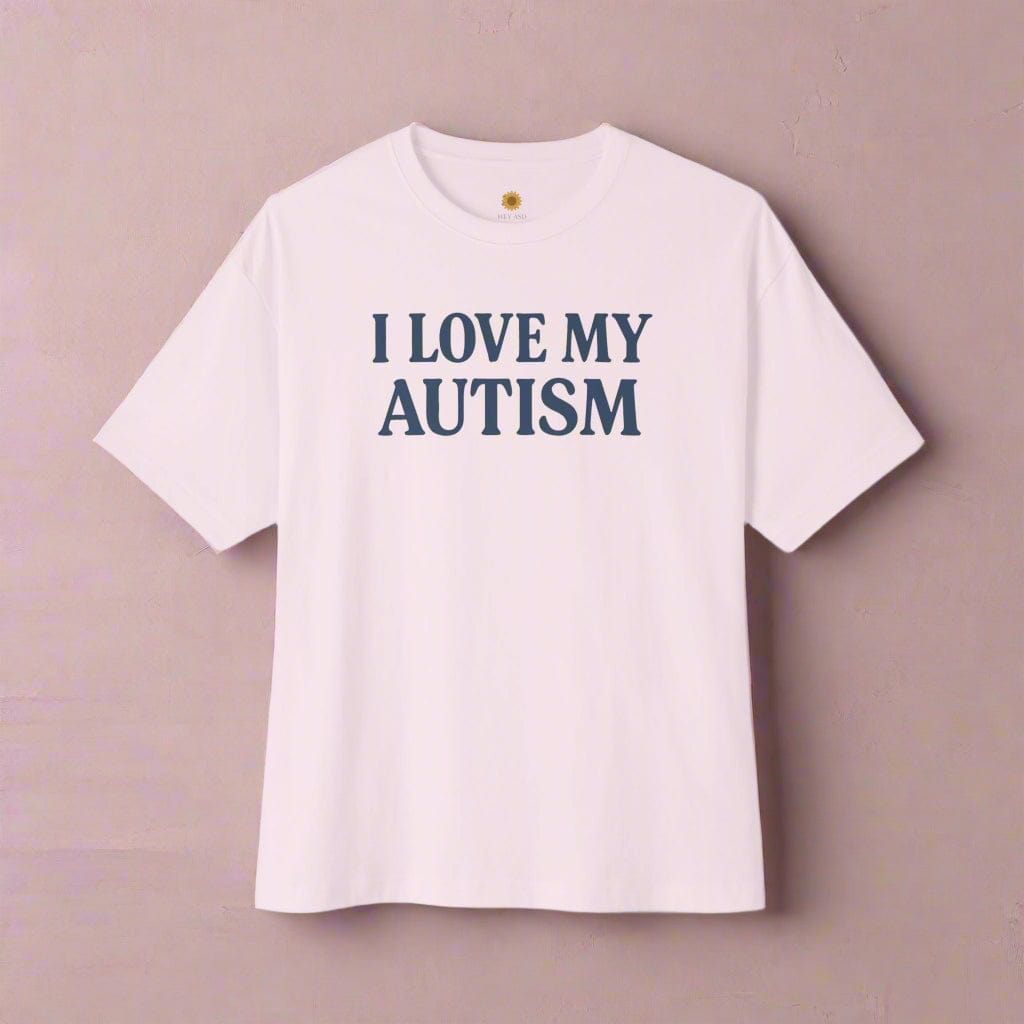Anxiety and Overstimulation: When the World Feels Too Loud

Written by the HeyASD Editorial Team
Have you ever found yourself tense and on edge in a grocery store — the hum of refrigerators, the flicker of fluorescent lights, the constant beeps and chatter all blending into one overwhelming blur? If so, you’re not alone. For many people, especially those with sensory sensitivities, autism, or anxiety, this kind of environment can quickly shift from manageable to unbearable. It’s not weakness — it’s your nervous system asking for relief.
Overstimulation and anxiety are deeply connected. When your senses are bombarded with more input than your brain can comfortably process, your body activates its stress response. Understanding this link helps you move from frustration or self-blame to awareness and care. Whether you’re an autistic adult, a highly sensitive person, or someone still learning why the world sometimes feels “too much,” this guide offers clarity, comfort, and real-world strategies to help you regain calm.
Everyday Sensory Overload: Why the World Can Feel “Too Much”
In our fast-paced daily life, it’s easy to encounter sensory overstimulation. A friendly dinner can feel like a struggle in a loud restaurant, or a familiar task can seem impossible in a crowded space with bright lights. These situations flood your brain with more sensory input than it can handle at once.
This isn't just about feeling stressed; it's a physical and emotional response. When social situations or environments push you past your limit, you might experience feelings of overstimulation that are hard to shake. How does sensory overload affect people with anxiety? It can turn a manageable day into an overwhelming one. We will explore the common sources of this overload.
Common Triggers: Bright Lights, Loud Sounds, Crowds, and Emotional Energy
Many things in our environment can become common triggers for overstimulation. They are often a combination of sensory and emotional stimuli that, when piled together, become too much for your nervous system to process. Identifying what affects you is a powerful step in managing your responses.
What environments are most likely to cause sensory overload and anxiety? Often, it's places with a high volume of unpredictable input. Think of shopping malls, concerts, or busy offices where you have little control over the sensory landscape. Even your phone, with its constant notifications, can contribute to this feeling.
Some of the most frequent triggers include:
-
Loud noises: Background conversations, traffic, or sudden sharp sounds.
-
Bright lights: Fluorescent lighting, flashing screens, or intense sunlight.
-
Crowded spaces: The physical closeness and movement of many people at once.
-
Strong smells: Perfumes, cleaning products, or food courts.
-
Emotional energy: Being around emotionally charged conversations or intense people.
The Spiral From Overstimulation to Anxiety: A Relatable Experience for Many
The journey from feeling overstimulated to feeling anxious is a common one. It can feel like your brain’s volume knob is stuck on high, and you can't turn it down. This isn't a personal failing; it's your nervous system trying to protect you from what it perceives as a threat. When sensory input becomes overwhelming, your body may activate its stress response.
How does hyperstimulation feel for someone with anxiety? It's often described as a wave crashing over you. There is too much information coming from every direction, and it becomes hard to think clearly. You might feel trapped, irritable, or desperate to escape the situation.
This feeling of overload can quickly produce anxiety symptoms. Your heart might race, your breathing might become shallow, and a sense of dread can set in. This spiral shows the deep connection between your sensory environment and your emotional well-being, highlighting the increased risk of overstimulation when your system is already on alert.
What Is Overstimulation?
So, what is overstimulation, exactly? In simple terms, it happens when your brain struggles to process the amount of sensory input it’s receiving. It’s more than just feeling overwhelmed by your to-do list; it’s a neurological response to too much information from your senses all at once. Is there a connection between sensory processing issues and anxiety? Yes, and understanding overstimulation is the key.
This state can be triggered by sensory, emotional, or even intellectual input. Unlike general stress, it’s rooted in your sensory processing system. Recognizing this can help you address the root cause of your discomfort, rather than just the surface-level mental health conditions. Next, let's break down the different kinds of input that contribute to it.
Sensory Input Explained: Sight, Sound, Touch, Movement, and Emotion
Your brain is constantly taking in information through your senses. This sensory input is how you understand and interact with the world. Overstimulation can happen when any one of these channels—or several at once—becomes overloaded. It's helpful to know what kinds of stimuli might be affecting you.
These inputs can be both physical and non-physical. Auditory experiences like constant noise or visual clutter from bright, flashing lights are common culprits. Physical contact, whether it's an unexpected touch or the texture of your clothing, can also be a significant source of sensory stimuli.
Beyond the five traditional senses, there are also psychological stimuli. This includes intellectual overstimulation from overthinking and emotional overstimulation from managing your own feelings or absorbing those of others. In social settings, all these inputs combine, which explains why you might get anxious in crowded, loud places—your nervous system is trying to process everything simultaneously.
Overstimulation Anxiety in Neurodivergent and Neurotypical Experiences
Anyone can experience anxiety from overstimulation. However, if you are an autistic person, have ADHD, or have a sensory processing difference, you might find it happens more frequently or feels more intense. This is not a flaw; it's simply a difference in how your brain processes the world. How does sensory overload affect people with anxiety? For many, it's a daily reality.
For a highly sensitive person, the nervous system is more attuned to the environment. You might notice small details, feel emotions deeply, and be more affected by loud noises or bright lights. This heightened sensitivity can make you more prone to feeling overwhelmed in situations that others might not even notice. Anxious feelings can be a direct result of this intense sensory processing.
This experience is not limited to a specific diagnosis like social anxiety disorder. It's a fundamental aspect of how some nervous systems work. Understanding this can shift your perspective from feeling like something is "wrong" with you to recognizing that your body just needs a gentler, more predictable environment to feel safe.
How Overstimulation and Anxiety Are Connected
The link between overstimulation and anxiety is wired directly into your nervous system. When your brain’s processing center, the amygdala, gets overloaded with sensory information, it can’t sort through it all efficiently. This overload can trigger the body’s stress response, also known as the fight-or-flight response.
Can overstimulation make anxiety worse in daily life? Absolutely. The release of stress hormones like cortisol and adrenaline makes it difficult to focus and manage emotions. This response can make you feel more irritable, on edge, or anxious. Let's look closer at what happens inside your body during these moments.
Fight, Flight, Freeze, and Fawn: What Happens Inside Your Nervous System
When your nervous system detects a threat—whether it’s a real danger or an overwhelming amount of sensory input—it triggers a survival response. This is your autonomic nervous system taking over to protect you. These responses are automatic and designed to keep you safe when your thinking brain (the prefrontal cortex) is offline due to high cortisol levels.
Most people have heard of the "fight-or-flight" response, but there are other reactions too. Understanding your typical response can help you recognize when you're overloaded. The link between your nervous system and why you get anxious in crowded, loud places is that your body is interpreting the sensory chaos as a danger signal.
These responses are your body’s attempt to cope with an overwhelming situation.
|
Response |
What It Looks and Feels Like |
|---|---|
|
Fight |
Feeling irritable, angry, or argumentative. You might want to push back against the source of stress. |
|
Flight |
An intense urge to escape the situation. You might feel restless, antsy, or panicked and look for an exit. |
|
Freeze |
Feeling stuck, numb, or unable to move or speak. Your mind might go blank as your body shuts down to "hide." |
|
Fawn |
Trying to please or appease others to avoid conflict. You might agree to things you don't want to do to de-escalate the situation. |
The Feedback Loop: When Anxiety Makes Sensory Sensitivity Even Stronger
Overstimulation and anxiety can create a challenging cycle. When you are overstimulated, you might feel anxious. But feeling anxious can also make you more sensitive to your environment, creating a feedback loop that is hard to break. Can overstimulation make anxiety worse in daily life? This loop is exactly how it happens.
When you're already experiencing high levels of anxiety, your brain is on high alert. Things that normally wouldn't bother you can suddenly feel intensely stressful and overwhelming. Your sensory experiences become magnified, and your tolerance for noise, light, or social interaction decreases significantly. This can lead to a state of chronic stress that impacts your mental health.
Breaking this cycle often requires a two-pronged approach: managing your anxiety symptoms and reducing your sensory input. It’s about teaching your body to move from a state of stress to a state of relaxation. Sometimes, this requires professional support to learn new strategies and regain a sense of balance.
Recognizing Signs and Symptoms of Overstimulation Anxiety
Learning to recognize the early signs of overstimulation anxiety is a crucial skill. When you can identify what’s happening in your body and mind, you can take steps to regulate yourself before things spiral out of control. These symptoms are not just in your head; they manifest as real physical symptoms and emotional changes.
These signs can be subtle at first—a clenched jaw or a feeling of irritation. Paying attention to these cues can prevent sensory overstimulation from escalating into a full-blown meltdown or shutdown. Below, we'll explore the physical, emotional, and sensory signs that indicate your system is becoming overloaded.
Physical Signs: Racing Heart, Tense Jaw, Restlessness, Nausea
When your body enters a state of overstimulation and anxiety, it often sends clear physical signals. These physical symptoms happen because your fight-or-flight response is activated, preparing you to face a perceived threat. This can shut down or alter normal bodily functions, like digestion, while increasing your heart rate.
You might not even realize why you suddenly feel unwell. It’s common to experience headaches, muscle tension, or stomachaches without connecting them to the noisy environment you were just in. What are common symptoms of anxiety caused by overstimulation? They often start in the body.
Common physical signs to watch for include:
-
A racing heart or heart palpitations.
-
Shallow breathing or shortness of breath.
-
Muscle tension, especially in the jaw, neck, and shoulders.
-
Nausea or a feeling of being "sick to your stomach."
-
Feeling tired, restless, or shaky.
Emotional Signs: Irritability, Fear, Guilt, Urge to Withdraw
Alongside the physical signs, overstimulation triggers a cascade of emotional responses. These feelings can be confusing and intense, often seeming to come out of nowhere. One of the most common emotional stimuli is a sudden wave of irritability. You might snap at loved ones or feel irrationally angry about small things.
Fear is another powerful emotional sign. This can range from a general sense of unease to a full-blown feeling of panic. You might also feel an overwhelming urge to withdraw from social situations, even if you were enjoying yourself just moments before. This isn't because you're antisocial; it's your brain's way of telling you it needs a break.
Many people also experience guilt. You might feel guilty for needing to leave an event early or for not being able to handle what others seem to manage easily. It’s important to remember that these feelings are a valid response to being overwhelmed, not a reflection of your character.
Sensory Signs: When Touch, Sound, or Emotions Become Overwhelming
The most direct sign of overstimulation is when your senses go into overdrive. Everyday sensory stimuli that you can normally tolerate suddenly become unbearable. This is the core of a sensory overload experience, where everything feels "too much."
Sounds might seem painfully loud, lights uncomfortably bright, and smells overpowering. The feeling of a clothing tag on your skin or an unexpected physical contact can feel jarring and invasive. It’s as if your brain has lost its ability to filter incoming information, so everything is coming at you with equal intensity.
This can also apply to the emotions of others. You might feel like you’re absorbing the stress or excitement in a room, adding to your own internal chaos. Recognizing this sensory escalation is your cue to find a quieter, calmer space to let your nervous system reset.
Why This Is Common in Autism and Sensory Sensitivity
While anyone can be affected by sensory overload, it is a very common experience for autistic people. Many autistic adults, including those with late-diagnosed autism, have navigated these behavioral challenges their entire lives. This is due to differences in sensory processing. It's not a disorder, but a fundamental aspect of the autistic neurotype.
For autistic people, the brain may process sensory information with greater intensity or have difficulty filtering out irrelevant stimuli. This can lead to a state of overwhelm more quickly than it might for a neurotypical person. Understanding this is key to providing the right support and validation. Next, we will explore these processing differences more deeply.
Sensory Processing Differences in Autism: Understanding Your “Volume Knob”
Imagine your brain has a volume knob for every sense. For many autistic people, that knob is turned way up, or it fluctuates unpredictably. This is a simple way to understand sensory processing issues. It's not that you're "too sensitive"; it's that your brain is taking in more information from the world around you. This is a known risk factor for experiencing autism sensory overload.
This can mean that sounds are louder, lights are brighter, and textures are more noticeable. What might be background noise to someone else could be a distracting symphony of sounds to you. This constant high volume of sensory input is exhausting and can easily lead to a state of overwhelm or even autistic burnout over time.
Because of this, an environment that feels comfortable to a neurotypical person can feel chaotic and threatening to an autistic person. This isn't a choice or a behavioral problem—it is a neurological reality. Recognizing your unique sensory profile is the first step toward creating a life that honors your needs.
Noticing Overstimulation Anxiety Before an Autism Diagnosis
Many autistic adults live with the cycle of overstimulation and anxiety for years before receiving a diagnosis. They might have been labeled as "shy," "anxious," or "difficult" as children. As adults, they might struggle with daily functioning, finding work, and social events draining without knowing exactly why. These sensory overload episodes can take a toll on physical health and lead to other health issues.
Are children or adults more prone to anxiety from sensory overload? It affects people of all ages, but adults may have developed complex and often exhausting masking strategies to hide their discomfort. Finding out about late-diagnosed autism can be a life-changing moment of clarity. It provides a framework for understanding a lifetime of experiences.
This realization is incredibly validating. It reframes the experience not as a personal failure but as a nervous system trying its best to cope in a world not designed for it. It’s a sign of your body trying to protect you. Early intervention isn't just for kids; self-understanding at any age is a powerful tool for better mental and physical health.
Key Takeaways: Overstimulation & Anxiety
- Overstimulation happens when your senses take in more than your brain can process. Bright lights, noise, and emotional energy can all contribute to this sensory overload.
- Anxiety and overstimulation feed into each other. The more anxious you feel, the more sensitive you become to sensory input — and vice versa.
- Common triggers: fluorescent lighting, crowded spaces, background chatter, strong smells, and emotionally charged environments.
- Your reaction is valid. Feeling flooded or needing to step away isn’t weakness — it’s your nervous system protecting you from overwhelm.
- Grounding techniques help regulate your body’s stress response. Try deep breathing, sunglasses, quiet breaks, gentle textures, or a predictable routine.
- Highly sensitive and autistic individuals often experience this more intensely, but awareness and sensory-friendly environments can make daily life feel safer and calmer.
- Preparation matters. Shopping at quieter times, using noise-canceling headphones, or advocating for sensory-friendly hours can reduce anxiety before it builds.
Conclusion
Understanding the connection between overstimulation and anxiety allows you to approach your experiences with compassion rather than judgment. Whether it’s bright lights, busy sounds, or emotional tension that pushes your system into overdrive, awareness gives you choice. You can pause, breathe, and respond — instead of feeling swept away.
Many autistic and highly sensitive people spend years feeling “too much” for the world. But the truth is, your nervous system isn’t broken — it’s finely tuned. By creating calmer environments and honoring what soothes you, you give your body the safety it’s been asking for all along.
At HeyASD, we believe comfort isn’t a luxury — it’s the point. Discover our sensory-friendly t-shirts, home décor, and small daily comforts made by autistic creators who understand what it’s like when the world feels too loud.
Creating a calmer world starts with small, sensory-safe choices. Explore calming décor and sensory-friendly t-shirts made by autistic creators — designed to help you breathe easier, wherever life takes you.
Frequently Asked Questions
Can overstimulation make anxiety worse in daily life?
Yes, absolutely. Frequent sensory overstimulation can keep your nervous system in a state of high alert, leading to chronic stress. This makes you more susceptible to anxiety symptoms in your daily life, as your body is constantly prepared for a threat that is sensory, not physical.
What environments are most likely to cause sensory overload and anxiety?
Environments with multiple, unpredictable sensory inputs are often the biggest culprits. This includes crowded spaces like malls or airports, places with loud noises and bright lights like concerts and some restaurants, and situations filled with strong smells or intense emotional stimuli.
Can overstimulation and anxiety be managed without medication?
Yes, many people find significant relief without medication. Management strategies often include environmental changes, relaxation techniques like deep breathing, and mindfulness techniques. Seeking professional support from a therapist who understands sensory needs can also provide you with effective, non-medical coping tools after an early intervention.
How can I create a calming environment to reduce feelings of overstimulation?
Create a safe space by controlling sensory stimuli. Use dim, warm lighting, reduce clutter, and incorporate soft textures. Noise-canceling headphones can block out noise. This helps regulate your nervous system, improving both your physical health and mental health by providing a predictable place to recover.
What are some common signs of anxiety caused by overstimulation?
Common signs include physical symptoms like a racing heart and nausea, and emotional symptoms such as sudden irritability or a strong urge to flee. The core experience of sensory overload is feeling like everything is "too much," which then triggers these classic anxiety symptoms.
What techniques can help manage anxiety during overwhelming situations?
In the moment, coping strategies like deep breathing exercises or progressive muscle relaxation can calm your nervous system. It's also helpful to step away to a quieter space. Long-term, building a support network and exploring sensory integration therapy can provide you with a robust toolkit.
Are there specific coping strategies for individuals who are highly sensitive to sensory input?
Yes, individualized support is crucial. Strategies include using sensory tools like noise-canceling headphones or weighted sensory blankets, establishing predictable routines to reduce uncertainty, and avoiding known triggers when possible. Seeking professional help can create a tailored plan to manage sensory overload and its related behavioral challenges.



















